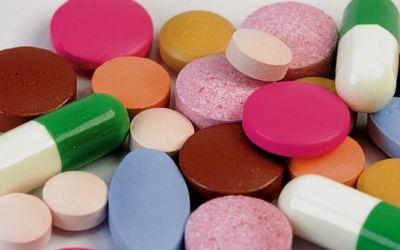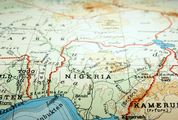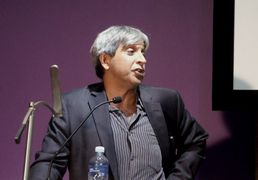Patent rules healthy for drug access
by Sreekanth Ventkatamaran and Philip Stevens,
2016-01-11 05:50:44.0
DURING the past 20 years, members of the World Trade Organisation (WTO) have made great progress in reducing barriers to trade in sectors as diverse as agriculture and information technology.
One area in which it has been routinely, but unfairly, criticised is healthcare. The source of much of that criticism can be traced to 1995, when the WTO ratified its Agreement on Trade-Related Aspects of Intellectual Property (Trips).
This set a global requirement for the first time for WTO members, apart from the poorest countries, to grant inventors basic forms of intellectual property such as patents.
However, the major global offensive on HIV in the mid-1990s prompted dire warnings from nongovernmental organisations that forcing developing countries to respect patents would make medicines unaffordable and cost lives. It has not played out like that. Access to HIV medicines in lower-and middle-income countries has increased considerably.
In 2003, only 400,000 people living with HIV had access to HIV medicines; today the figure is over 15.8-million. Prices actually dropped 95% between 1995 and 2000 as donor governments committed billions for purchasing the medicines.
Other health issues have replaced HIV in the global spotlight, but arguments about WTO patent and health rules persist. The latest controversy is affordability of the new generation of cures for hepatitis C.
But Trips has fuelled progress here too. Working within the framework, owners of these drugs have entered into licensing agreements with Indian manufacturers that allow the medicines to be distributed cheaply in 101 developing countries.
These licences are win-win. They give more people access to new medicines and preserve the incentives to invest in researching new treatments — the reason intellectual property rules exist. These rules have also allowed middle-income countries to get into pharmaceutical innovation. In the pre-Trips world, pharmaceutical research and development was the preserve of the West, while other countries stuck to copying existing medicines. In recent years, Indian and Chinese companies have started to collaborate more with multinational firms on research work, with India carving out a niche in vaccine development and China getting into biotech innovation.
Earlier this year, Chinese company Shenzhen Chipscreen Biosciences released a new biotech for a rare form of lymph node cancer, one of the first drugs to be researched and manufactured from start to finish in China. Some South African firms are innovating in medical devices and diagnostic technology.
Cape Town’s Vision Biotech claims to be the second-largest manufacturer worldwide of malaria testing kits. iThemba Pharmaceuticals is undertaking early-stage research work for new therapies for HIV and tuberculosis.
Overall, the story of trade and health is enormously positive. In the 1980s and early 1990s, many governments in Southeast Asia pursued trade and investment liberalisation, opened borders to trade, slashed import tariffs, removed exchange controls and limited restrictions on the free movement of capital.
Under WTO membership, these policies have only been accelerated, and as national borders have opened, life expectancies have rocketed and citizens now enjoy better healthcare, sanitation, nutrition and new medical technologies.
Government investments in healthcare have certainly helped, but it is difficult to deny the role of trade-driven economic growth. The WTO’s influence remains vital and its legally binding rules prevent members sliding back towards protectionism and economic autarky.
It is abundantly clear there are enormous benefits to be gained from removing trade barriers rather than reinforcing them.
• Dr Ventkatamaran is professor of economics at the Mahindra Ecole Centrale, Hyderabad. Stevens is director of the Geneva Network

Picture: ISTOCK
DURING the past 20 years, members of the World Trade Organisation (WTO) have made great progress in reducing barriers to trade in sectors as diverse as agriculture and information technology.
One area in which it has been routinely, but unfairly, criticised is healthcare. The source of much of that criticism can be traced to 1995, when the WTO ratified its Agreement on Trade-Related Aspects of Intellectual Property (Trips).
This set a global requirement for the first time for WTO members, apart from the poorest countries, to grant inventors basic forms of intellectual property such as patents.
However, the major global offensive on HIV in the mid-1990s prompted dire warnings from nongovernmental organisations that forcing developing countries to respect patents would make medicines unaffordable and cost lives. It has not played out like that. Access to HIV medicines in lower-and middle-income countries has increased considerably.
In 2003, only 400,000 people living with HIV had access to HIV medicines; today the figure is over 15.8-million. Prices actually dropped 95% between 1995 and 2000 as donor governments committed billions for purchasing the medicines.
Other health issues have replaced HIV in the global spotlight, but arguments about WTO patent and health rules persist. The latest controversy is affordability of the new generation of cures for hepatitis C.
But Trips has fuelled progress here too. Working within the framework, owners of these drugs have entered into licensing agreements with Indian manufacturers that allow the medicines to be distributed cheaply in 101 developing countries.
These licences are win-win. They give more people access to new medicines and preserve the incentives to invest in researching new treatments — the reason intellectual property rules exist. These rules have also allowed middle-income countries to get into pharmaceutical innovation. In the pre-Trips world, pharmaceutical research and development was the preserve of the West, while other countries stuck to copying existing medicines. In recent years, Indian and Chinese companies have started to collaborate more with multinational firms on research work, with India carving out a niche in vaccine development and China getting into biotech innovation.
Earlier this year, Chinese company Shenzhen Chipscreen Biosciences released a new biotech for a rare form of lymph node cancer, one of the first drugs to be researched and manufactured from start to finish in China. Some South African firms are innovating in medical devices and diagnostic technology.
Cape Town’s Vision Biotech claims to be the second-largest manufacturer worldwide of malaria testing kits. iThemba Pharmaceuticals is undertaking early-stage research work for new therapies for HIV and tuberculosis.
Overall, the story of trade and health is enormously positive. In the 1980s and early 1990s, many governments in Southeast Asia pursued trade and investment liberalisation, opened borders to trade, slashed import tariffs, removed exchange controls and limited restrictions on the free movement of capital.
Under WTO membership, these policies have only been accelerated, and as national borders have opened, life expectancies have rocketed and citizens now enjoy better healthcare, sanitation, nutrition and new medical technologies.
Government investments in healthcare have certainly helped, but it is difficult to deny the role of trade-driven economic growth. The WTO’s influence remains vital and its legally binding rules prevent members sliding back towards protectionism and economic autarky.
It is abundantly clear there are enormous benefits to be gained from removing trade barriers rather than reinforcing them.
• Dr Ventkatamaran is professor of economics at the Mahindra Ecole Centrale, Hyderabad. Stevens is director of the Geneva Network



























Change: -0.95%
Change: -1.26%
Change: -1.23%
Change: -0.89%
Change: -2.34%
Data supplied by Profile Data
Change: 0.00%
Change: 0.00%
Change: -0.95%
Change: 0.00%
Change: 0.00%
Data supplied by Profile Data
Change: 0.46%
Change: 0.03%
Change: 0.00%
Change: 0.87%
Change: -0.58%
Data supplied by Profile Data
Change: 0.00%
Change: 0.00%
Change: 0.00%
Change: 0.00%
Change: 0.00%
Data supplied by Profile Data